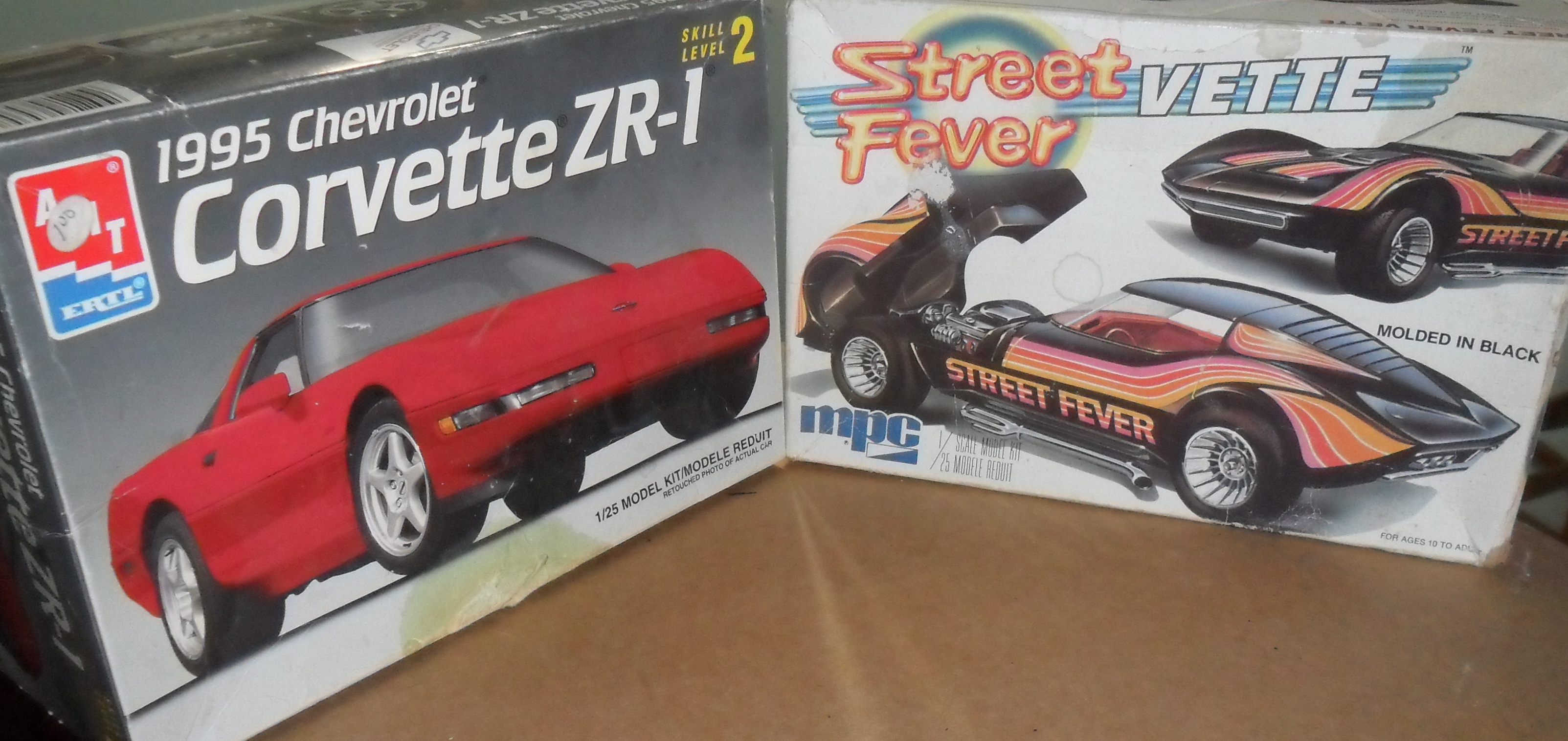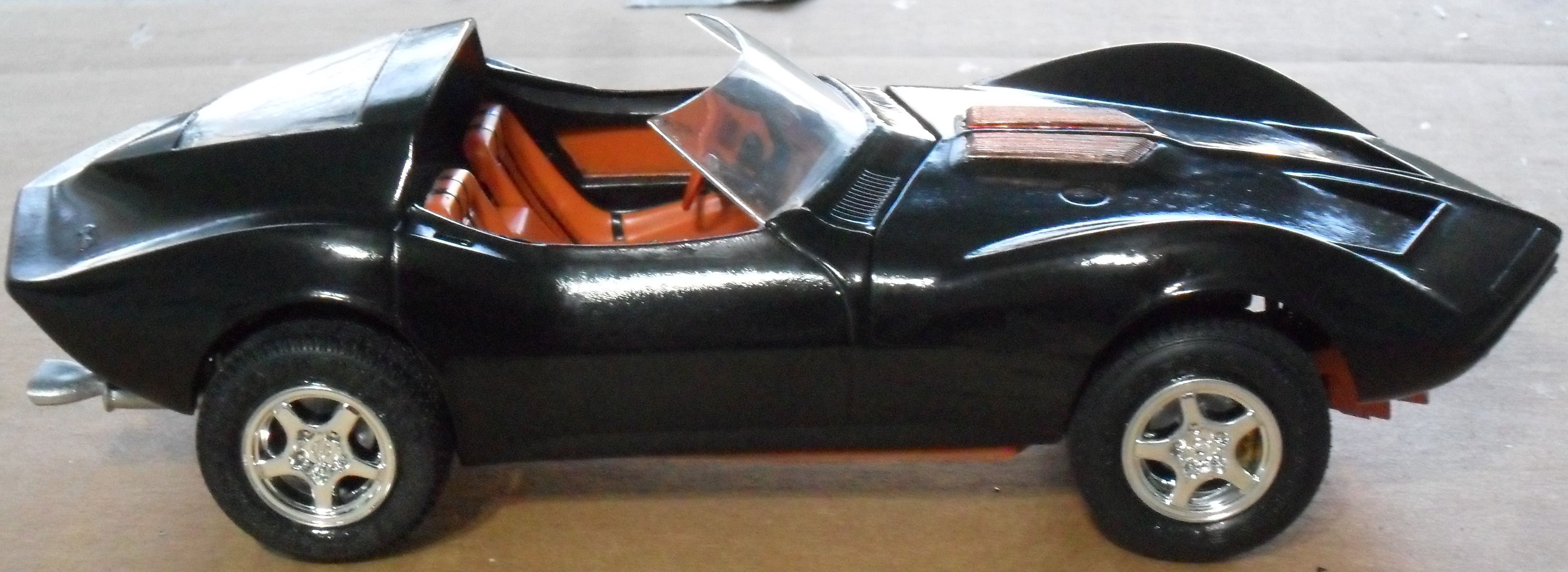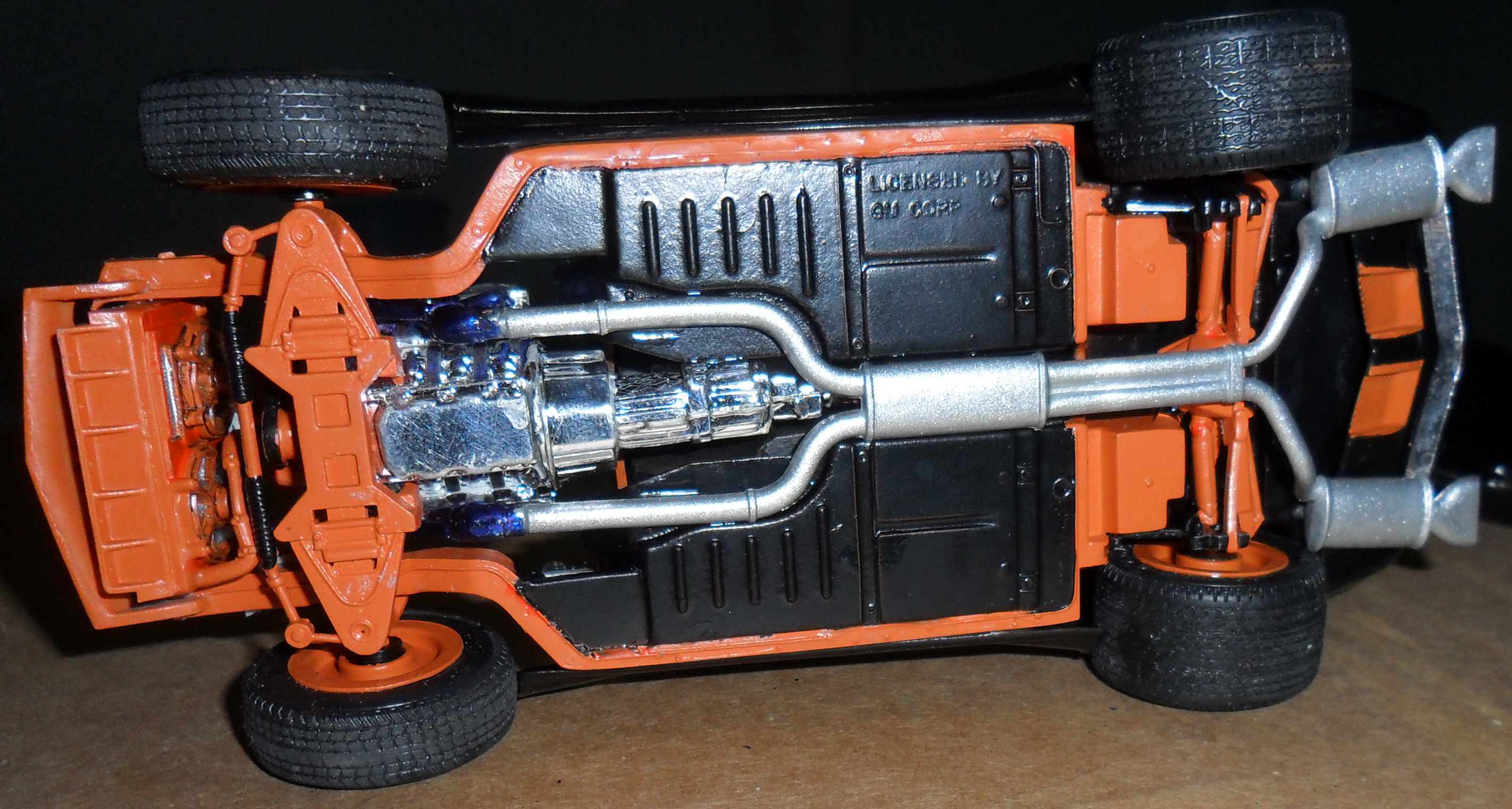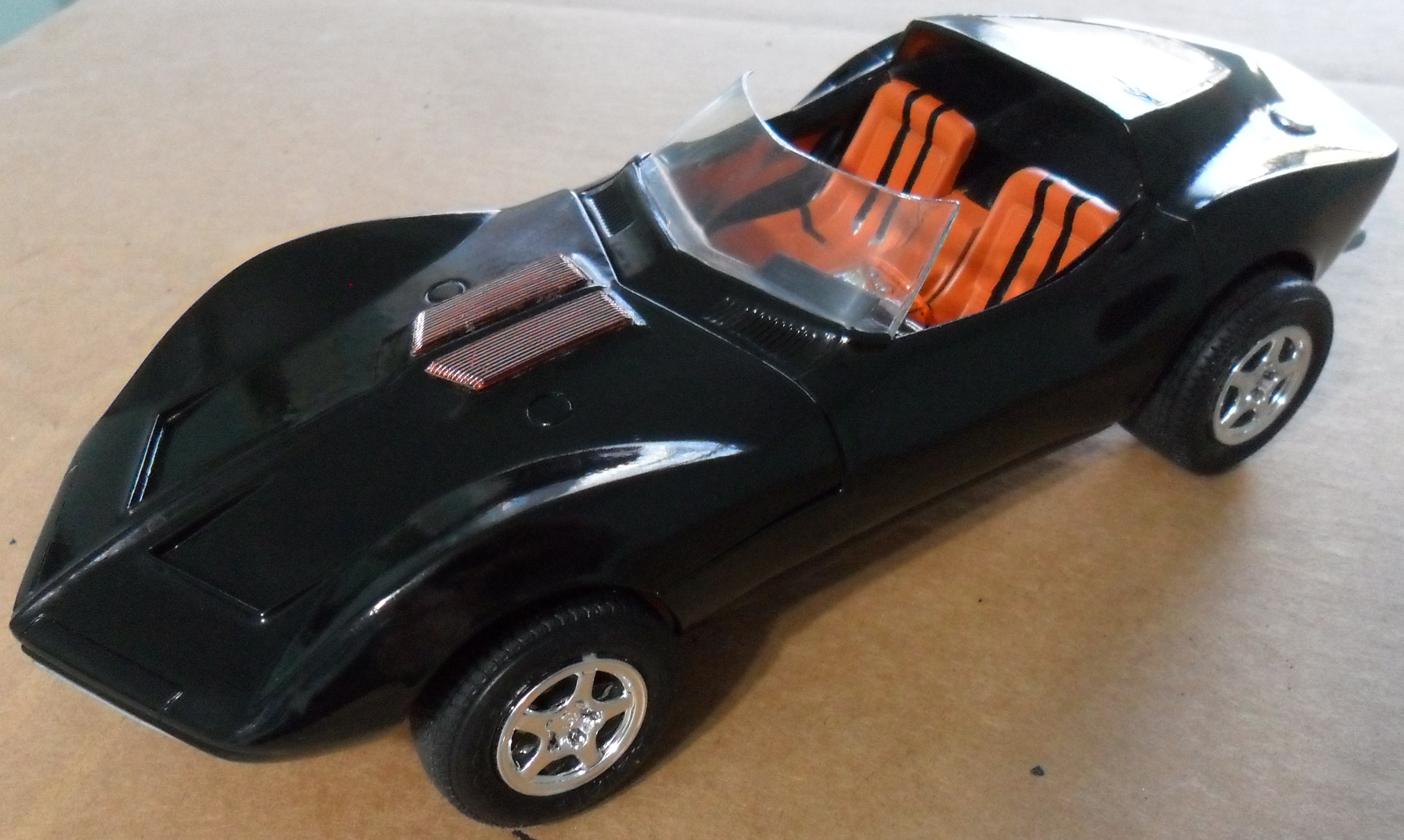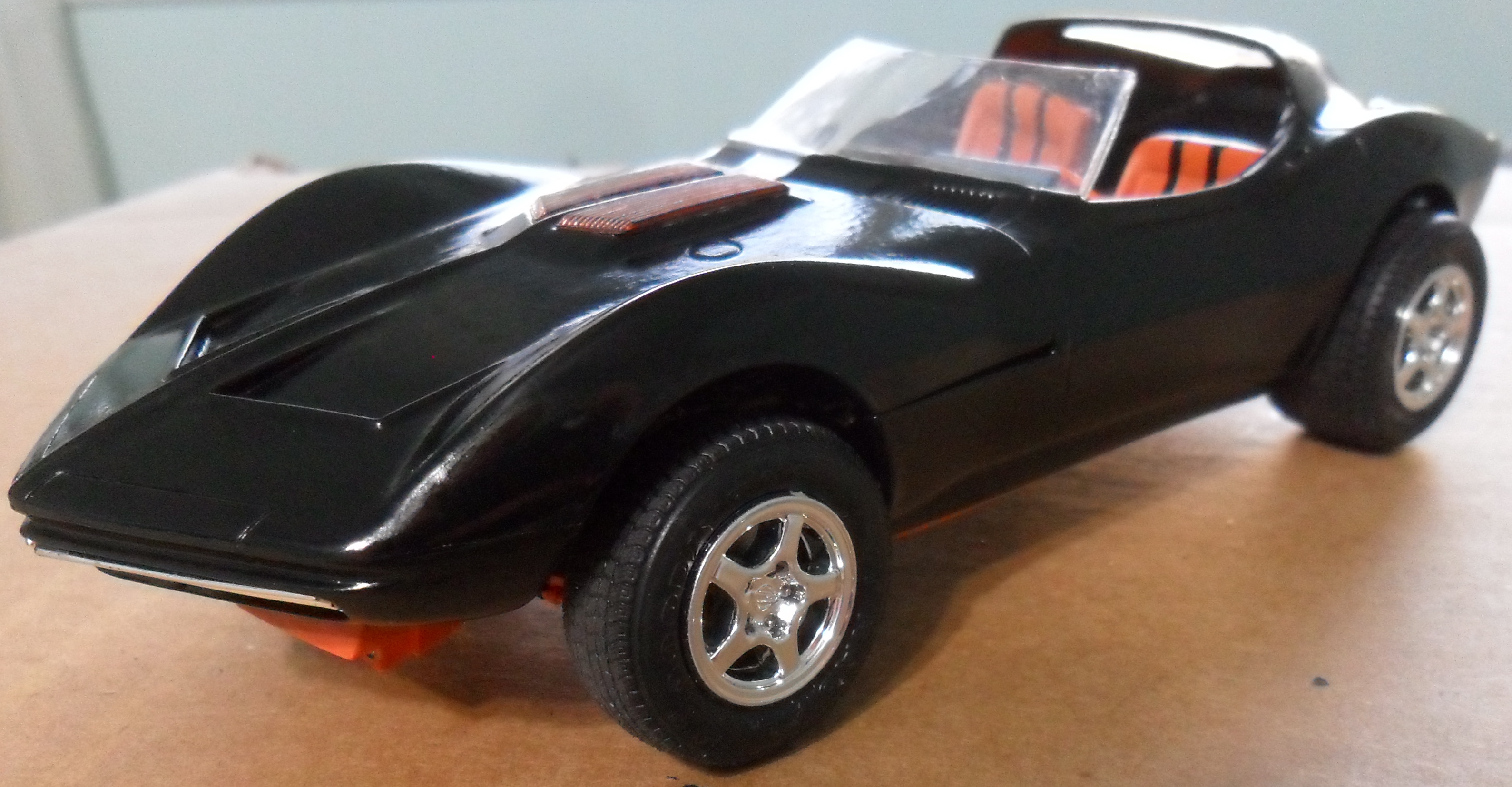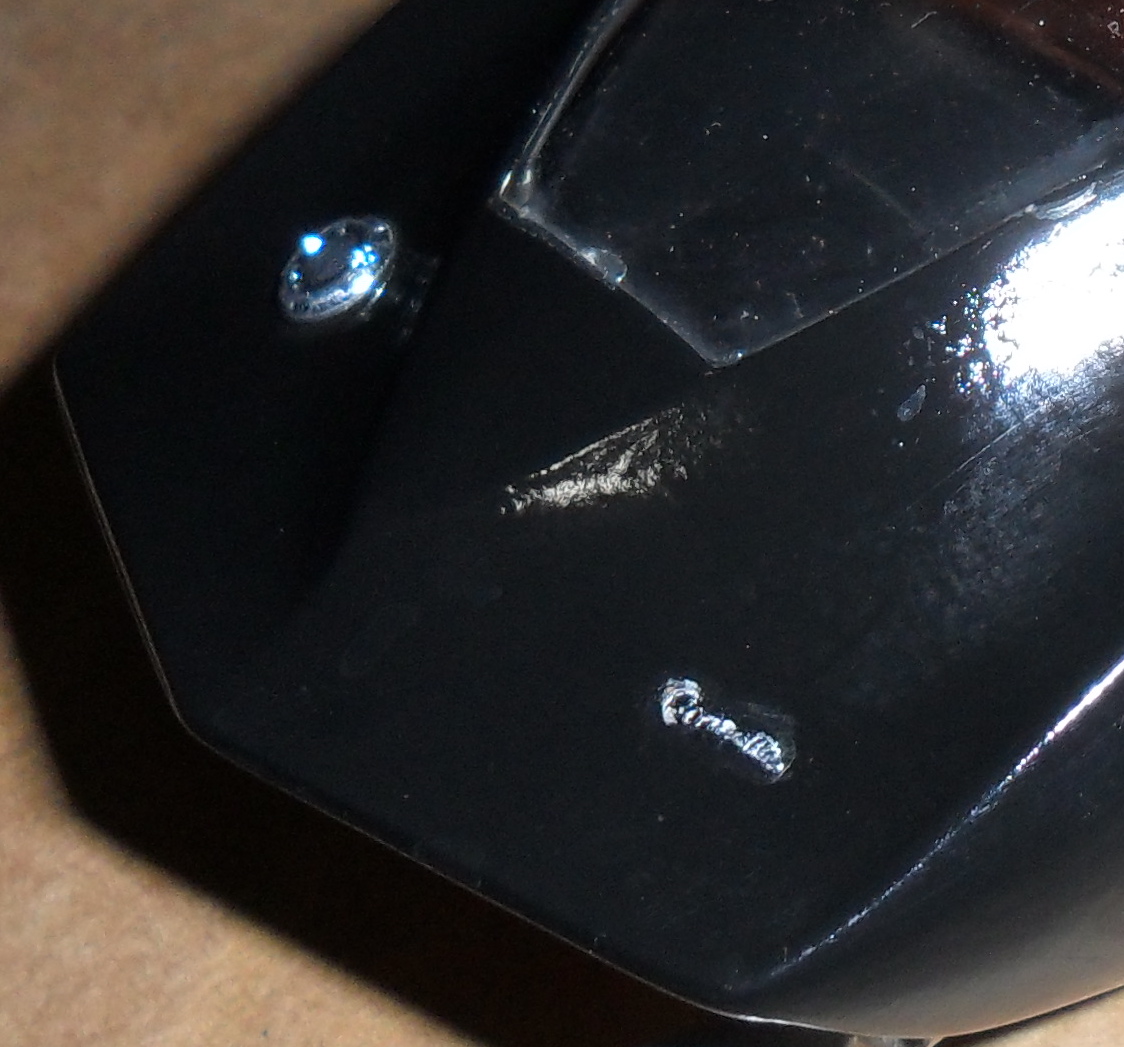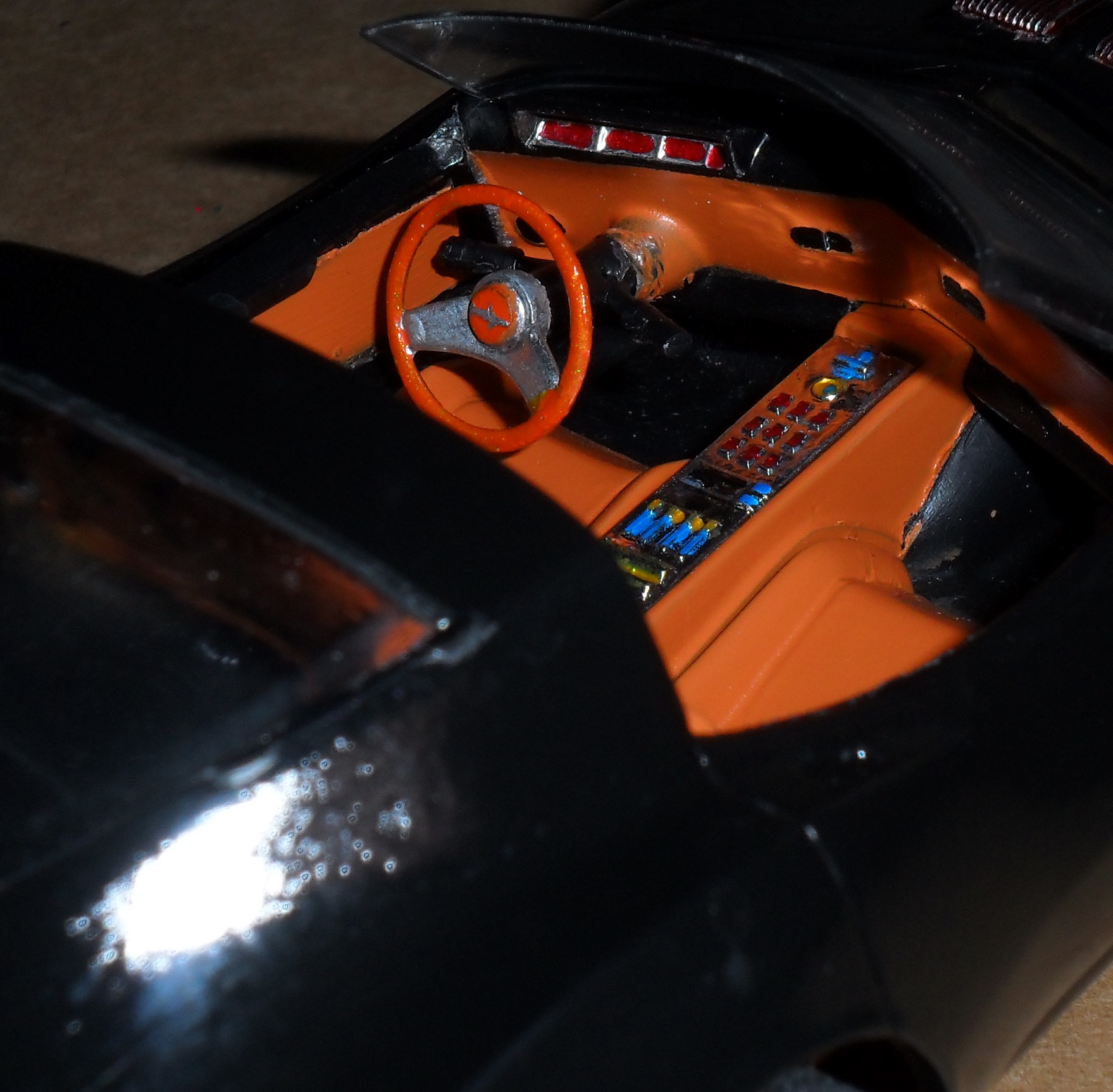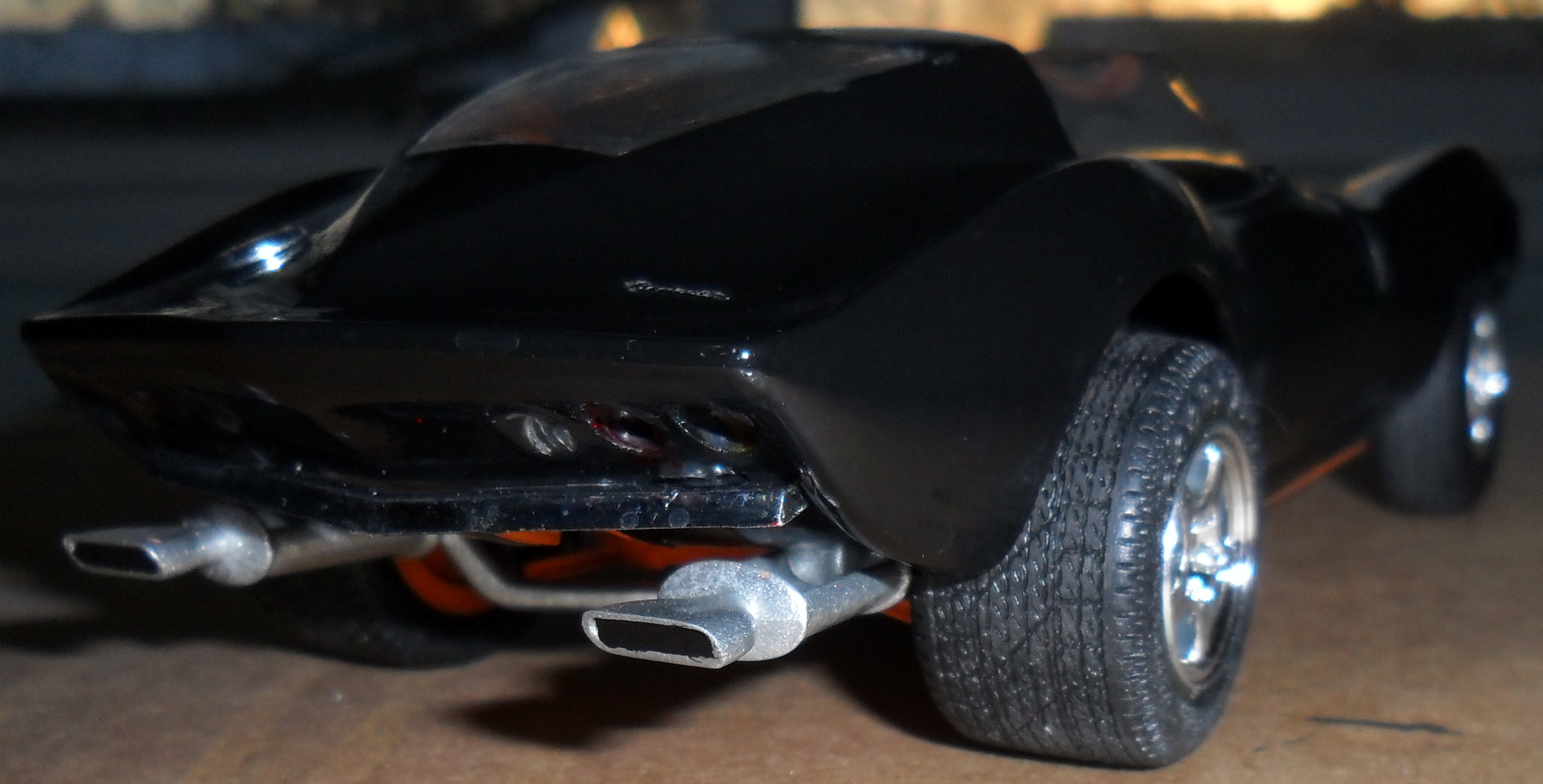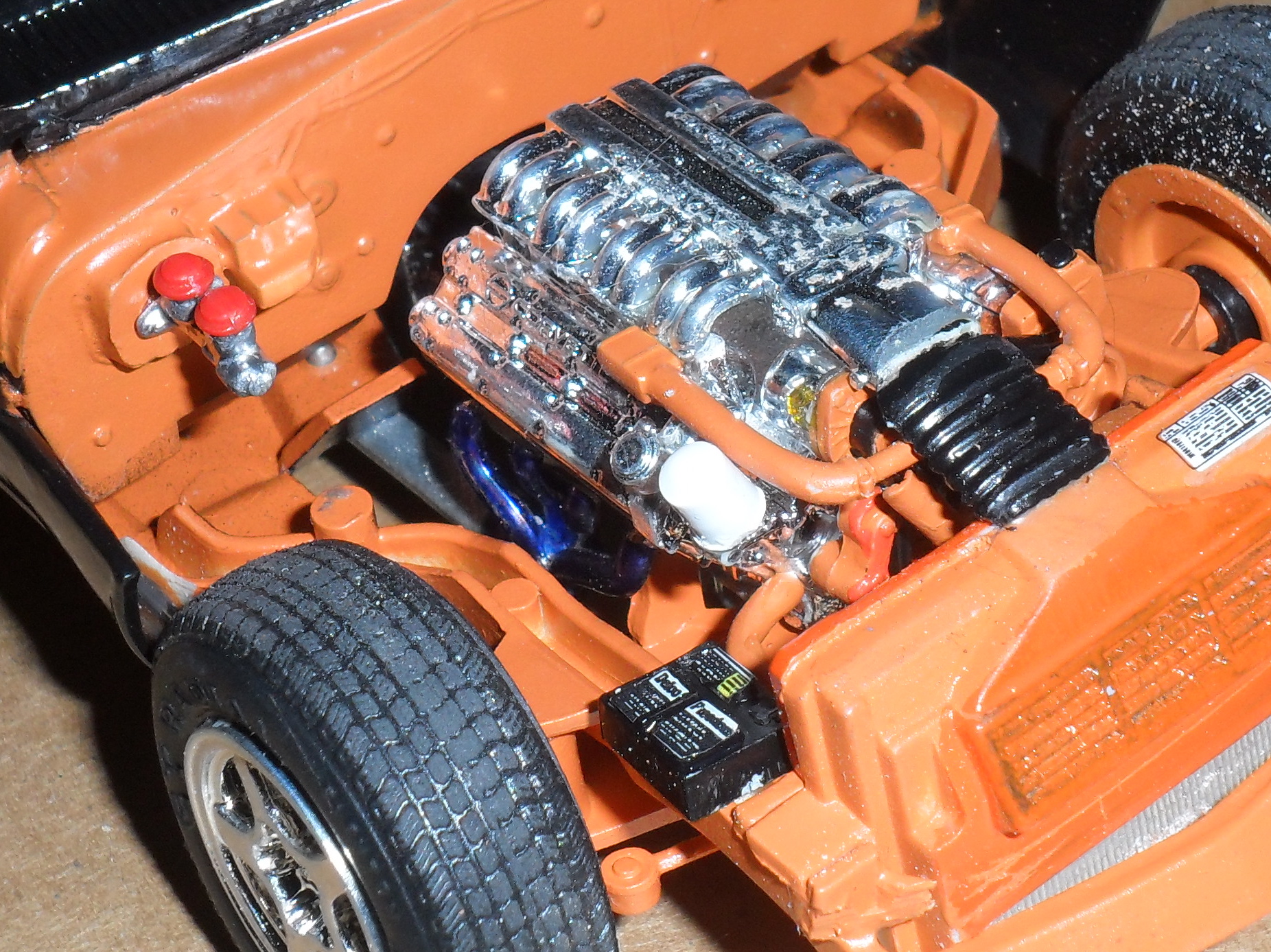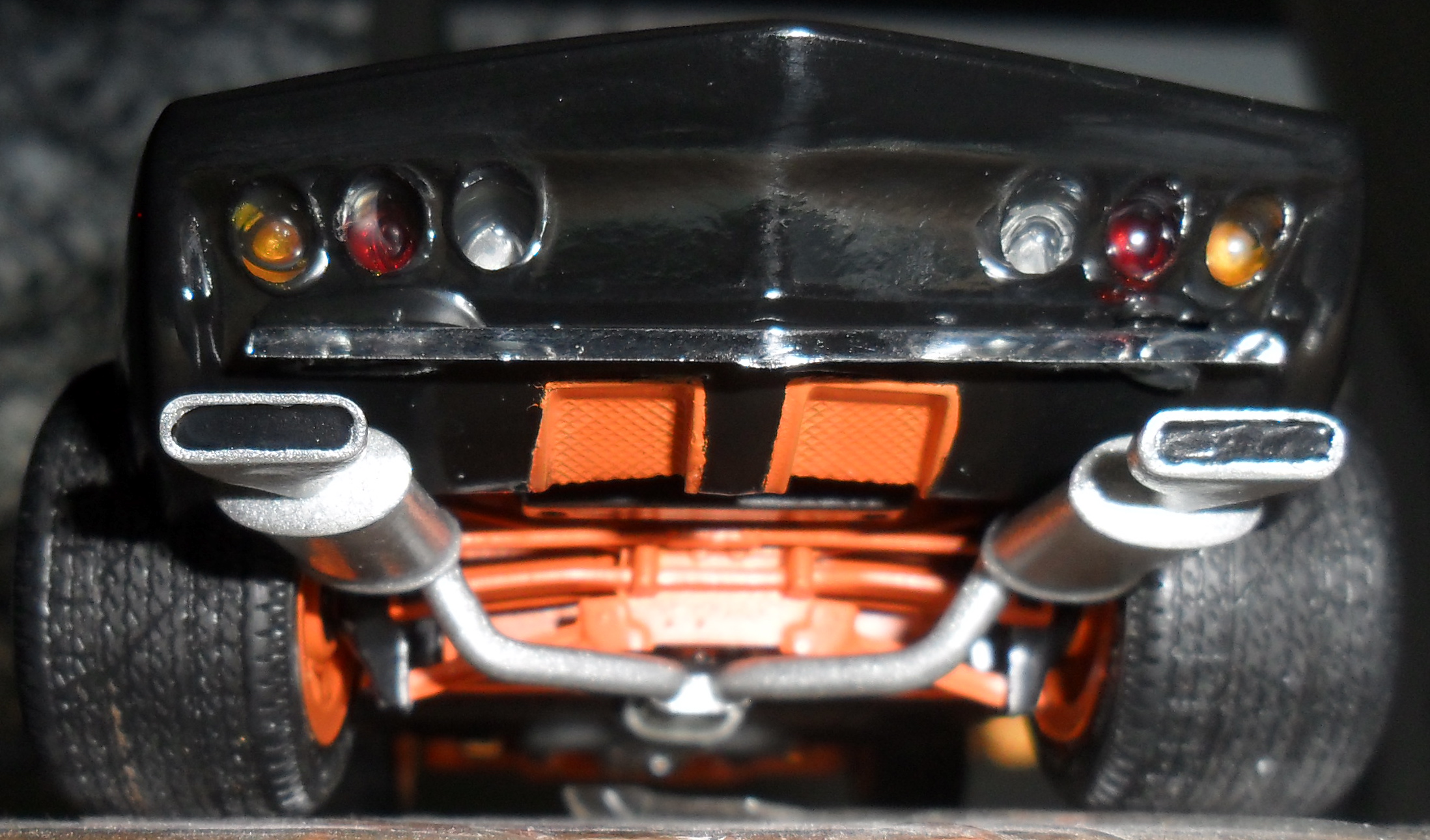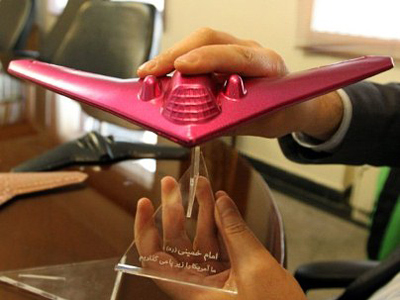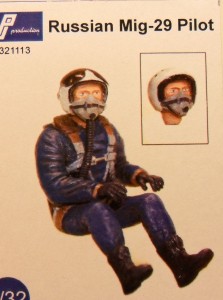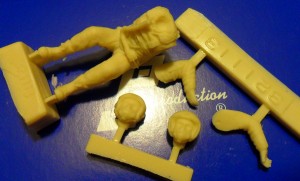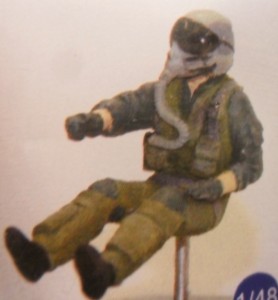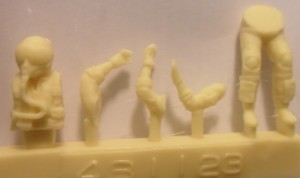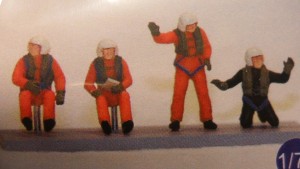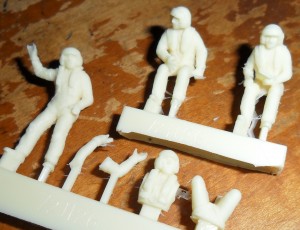Don’t throw out that 40 year old Heller kit just because it has raised surface detail. You can always use the wheels, landing gear doors and speed brake doors.
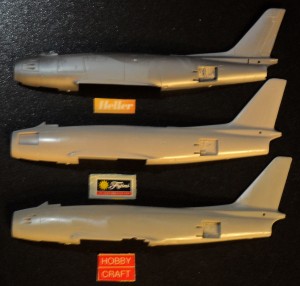
The fuselage of the Heller kit has a better shape, but it doesn’t come with the fuel dump (fixed easily), and the area where the elevators attach is the wrong shape (it’s too straight). The vertical tail/rudders on the Fujimi and Hobbycraft kits are bigger in area, and taller than the Heller kit. Fujimi and Hobbycraft have subtle recessed surface details.
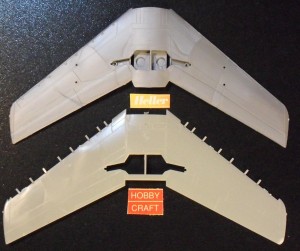
The F-30 wings are about the same size in all three kits. With Hobbycraft (now issued by Academy?) you get the added benefit of separately molded slats.
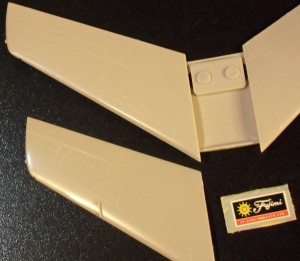
Surprisingly Fujimi does not make a distinction on its packaging regarding the type of wings their kits come with. In their “JASDF” issue you get an F-86F-40 with the extended span, slated wing. In their “Mig Mad Marine” issue you get the F-86F-30 with the in Korean War theater hard fenced wing conversion. Fujimi’s boxes just say “F-86F” (at least on the kits I have).
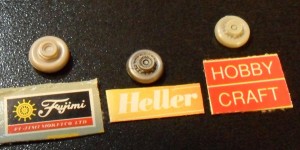
The old Heller kit has the best detailed main wheels. The Fujimi main wheel tires are the biggest in diameter, followed by Hobbycraft. Photos indicate that the Fujimi tires might be the correct diameter, but the Heller wheel definitely has the best detail. All three kits have similar nose wheels. The real F-86 used at least three types of nose wheels: Two types of spoked wheels, and a solid wheel. Most of the pictures I’ve seen of the solid nose wheel is of South Korean and West German Sabres.
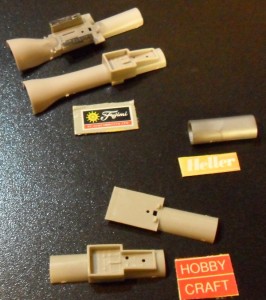
The Heller and Hobbycraft kits have a short intake trunk. The Hobbycraft kit has the nose wheel bay and cockpit floor molded onto the trunk. The Fujimi intake trunking also has the nose wheel bay and cockpit floor molded on, but is much deeper and actually goes somewhere.
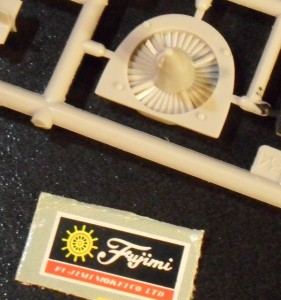
That somewhere is an incorrectly faced engine. The fan blades should be set back more (there should be a section of venturi before the blades), and the nose cone should be larger, but who’s gonna really notice once it’s assembled?
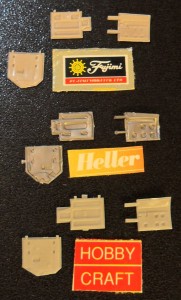
The wheel bay doors, and speed brake doors are much better, and accurately detailed on the old Heller kit.

Hobbycraft has screwed up its nose gear door. They’ve put the locator stubs on the wrong side. Their instructions give a vague indication of placement on the correct side of the wheel bay, but if your not paying attention and simply go with the locator stubs you’ll end up with the door on the wrong side (it should be on the pilot’s left side).
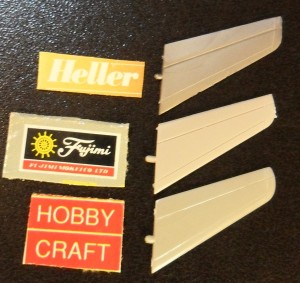
All three kits have issues with their elevators. The Hobbycraft kit has the shortest, with the least angle of sweep, and rounded tips. The Fujimi and Heller elevators have the same angle of sweep, but with different shaped tips. The Heller elevator is the longest of the three. From three view drawings of F-86F-30s it doesn’t look like any of the three kit makers got it right, although Heller’s looks the closest to being correct. The Fujimi and Hobbycraft elevators look more like earlier F-86A/E elevators (according to three view drawings).
Other notes: The cockpit details on the Heller kit are worthless. Fujimi has a nice looking instrument panel (not necessarily accurate, but it looks good), and it looks like Hobbycraft has copied the Fujimi panel. The detail on the side consoles, in all three kits, is spurious at best. All three kits have similar looking seats. All three kits have canopies that can be posed open. The Heller and Hobbycraft kits come with external fuel tanks, while the Fujimi kit comes with Sidewinder missiles as well as external fuel tanks.
You can improve the Fujimi and Hobbycraft kits with some of the parts from the Heller kit, but you’d still need aftermarket photo etch, or resin parts to improve the wheel bays and cockpits (or scratch build your own).
A note on references: In one book I have (no names/titles mentioned) there is a color photo of a South Korean F-86, with the -40 extended slat wing (and solid nose wheel). At the back of the book is a color profile of the same aircraft, except it shows the -30 hard fenced wing. It’s just an example to show that you can’t trust a profile, instead use photos of the real thing.
Part 2: F-86 Saber Fujimi vs Heller, or, Nobody is Perfect!
